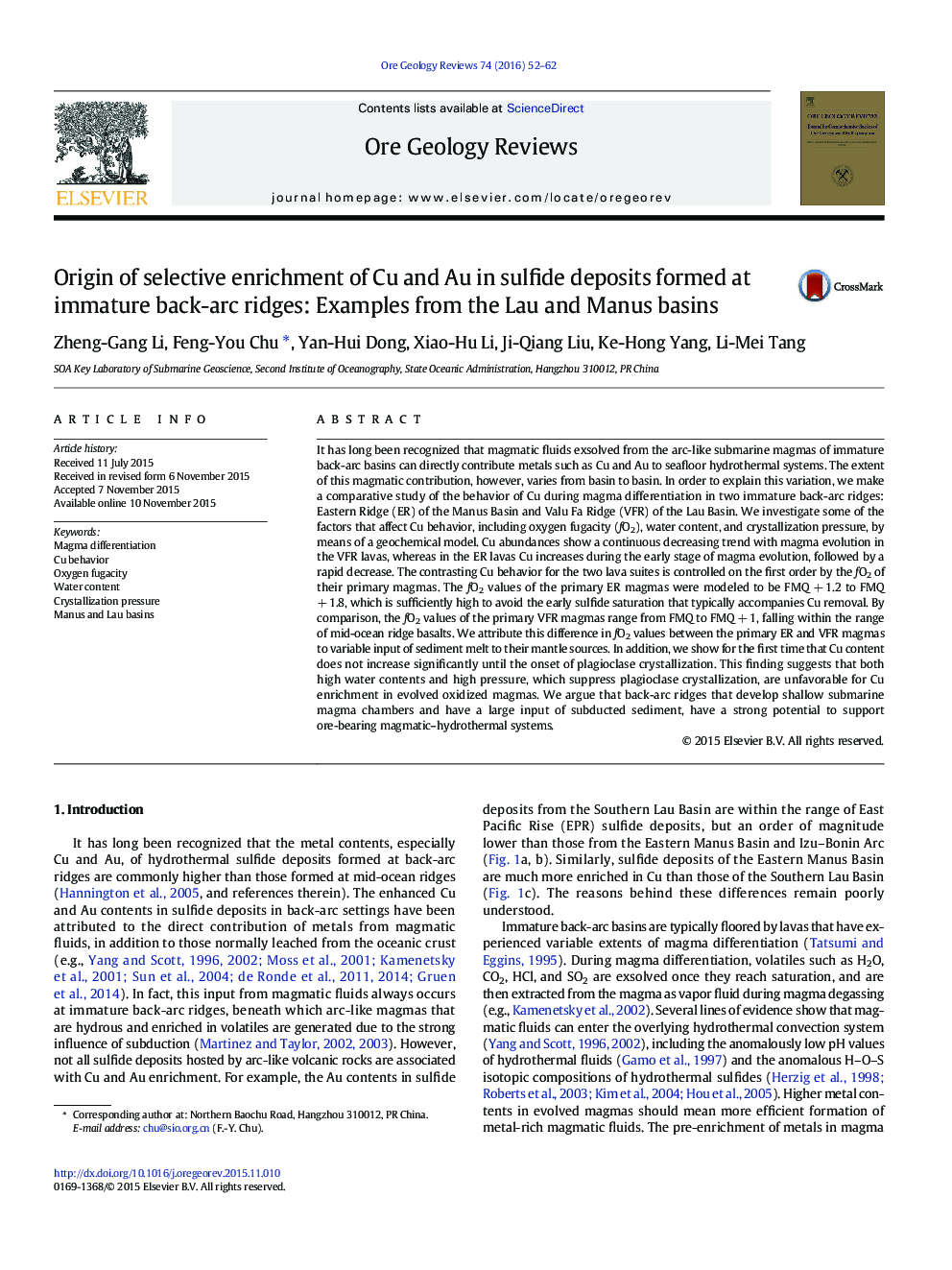| Article ID | Journal | Published Year | Pages | File Type |
|---|---|---|---|---|
| 4696823 | Ore Geology Reviews | 2016 | 11 Pages |
•Oxygen fugacity (fO2), water content and crystallization pressure were modeled for the primary magmas•Neither extremely high nor low fO2 is favorable for Cu enrichment during magma evolution.•Both high water content and high pressure are not favorable for Cu enrichment.•Cu content dose not increase significantly until the onset of plagioclase crystallization in an oxidized magma
It has long been recognized that magmatic fluids exsolved from the arc-like submarine magmas of immature back-arc basins can directly contribute metals such as Cu and Au to seafloor hydrothermal systems. The extent of this magmatic contribution, however, varies from basin to basin. In order to explain this variation, we make a comparative study of the behavior of Cu during magma differentiation in two immature back-arc ridges: Eastern Ridge (ER) of the Manus Basin and Valu Fa Ridge (VFR) of the Lau Basin. We investigate some of the factors that affect Cu behavior, including oxygen fugacity (fO2), water content, and crystallization pressure, by means of a geochemical model. Cu abundances show a continuous decreasing trend with magma evolution in the VFR lavas, whereas in the ER lavas Cu increases during the early stage of magma evolution, followed by a rapid decrease. The contrasting Cu behavior for the two lava suites is controlled on the first order by the fO2 of their primary magmas. The fO2 values of the primary ER magmas were modeled to be FMQ + 1.2 to FMQ + 1.8, which is sufficiently high to avoid the early sulfide saturation that typically accompanies Cu removal. By comparison, the fO2 values of the primary VFR magmas range from FMQ to FMQ + 1, falling within the range of mid-ocean ridge basalts. We attribute this difference in fO2 values between the primary ER and VFR magmas to variable input of sediment melt to their mantle sources. In addition, we show for the first time that Cu content does not increase significantly until the onset of plagioclase crystallization. This finding suggests that both high water contents and high pressure, which suppress plagioclase crystallization, are unfavorable for Cu enrichment in evolved oxidized magmas. We argue that back-arc ridges that develop shallow submarine magma chambers and have a large input of subducted sediment, have a strong potential to support ore-bearing magmatic–hydrothermal systems.
